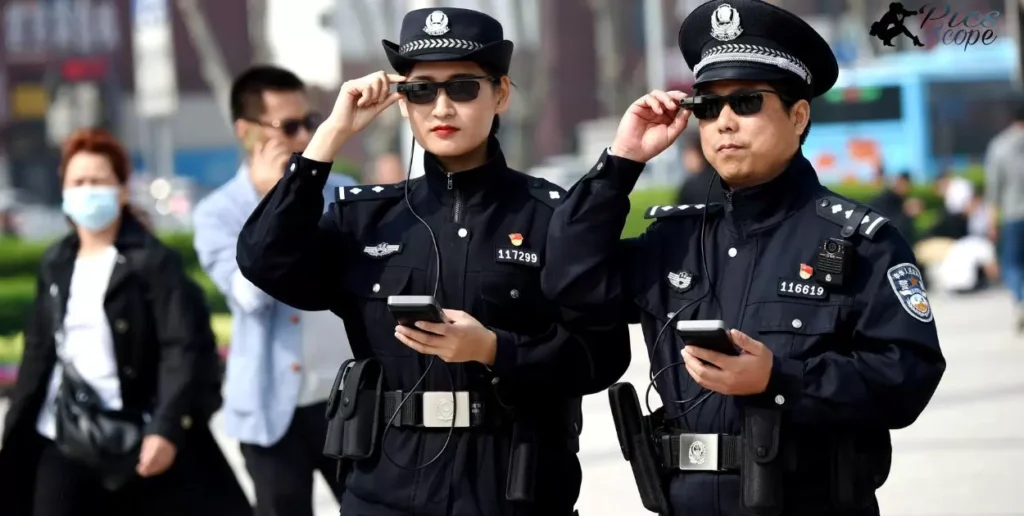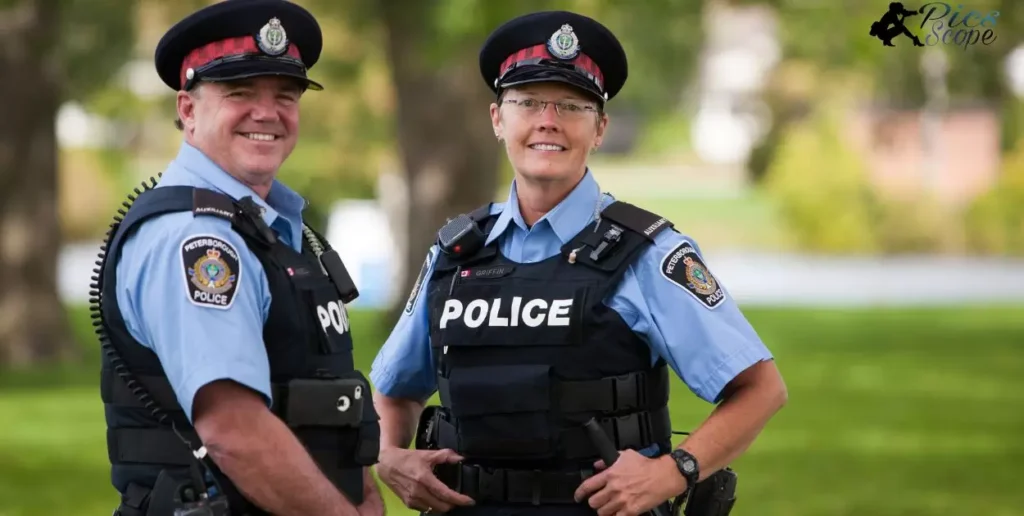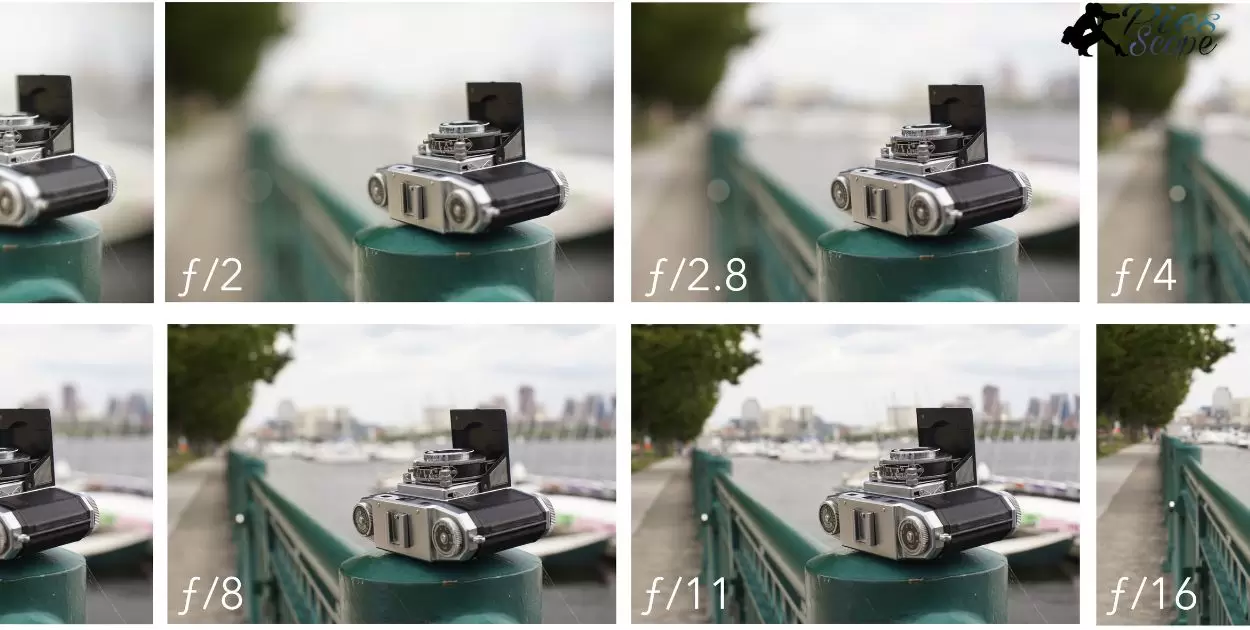Photography is the art of taking and processing photographs, crucial in law enforcement for documenting evidence. Cameras serve as a visual record, aiding investigations and ensuring transparency.
What Type Of Camera Is Ideal To Police Photography? This question delves into the intersection of technology and security, shaping tools for officers and the demands of police work.
Considerations for the ideal camera include durability, resolution, low-light performance, and ease of use. Body-worn, dash cams, and specialized surveillance cameras all contribute to visual documentation in law enforcement, promoting accountability and enhancing policing efforts.
Understanding Photography in Law Enforcement
In law enforcement, photography is crucial. Officers use cameras to document evidence and ensure transparency. The role of photography in police work has evolved over time.
Cameras help capture crucial moments and provide a visual record. This aids investigations and promotes accountability. Understanding how cameras work in law enforcement is essential for effective policing.
What role does photography play in police investigations?
Photography is crucial in police investigations as it provides a visual record of events. Officers use cameras to capture crime scenes, gather evidence, and document crucial details. These images become essential tools in solving cases, helping law enforcement reconstruct timelines and present clear, tangible evidence in court.
In the realm of law enforcement, photography serves as a straightforward and reliable method for preserving information. Officers can quickly and efficiently convey the details of a crime scene to their colleagues and investigators.
Facilitating a collaborative approach to solving cases. The visual documentation offered by photography ensures transparency and accuracy, playing a fundamental role in the investigative process.
How has the use of cameras evolved in the context of law enforcement?
Introduction of Body-Worn Cameras: Law enforcement has embraced the widespread use of body-worn cameras, providing officers with a mobile and on-the-ground perspective during interactions.
Advancements in Surveillance Technology: Surveillance cameras have evolved with improved resolution, night vision capabilities, and AI integration, enhancing their effectiveness in monitoring public spaces.
Integration of Dash Cams: Dash cameras in police vehicles have become standard, capturing real-time footage during pursuits and traffic stops, aiding in evidence collection and officer accountability.
Drones for Aerial Surveillance: The use of drones has risen, enabling law enforcement to conduct aerial surveillance for large-scale events, crime scenes, and search and rescue operations.
Enhanced Data Management Systems: Law enforcement agencies now employ sophisticated data management systems to handle the increasing volume of photographic evidence, ensuring efficient storage, retrieval, and analysis.
Importance of visual documentation for transparency and accountability.
Visual documentation is crucial for transparency and accountability in various fields, including law enforcement. When incidents are captured through cameras, it creates a clear record that can be easily understood by everyone.
In policing, body-worn cameras and dash cams provide a visual account of interactions between officers and the public. This transparency helps build trust within communities, ensuring that actions are accountable and in line with established protocols.
The accessibility of visual records fosters a more open dialogue between law enforcement agencies and the public they serve, ultimately contributing to a safer and more accountable environment.
Technology and Security in Police Photography

In police photography, technology and security are crucial aspects. Cameras must have features that help law enforcement officers effectively carry out their duties. The tools they use should be reliable, ensuring quick and efficient capture of critical moments.
The intersection of technology and security impacts the choice of cameras for law enforcement. Officers need devices that are easy to use, durable, and equipped with the latest features. These tools enhance their ability to document events accurately and contribute to the overall effectiveness of policing efforts.
What features are pivotal for cameras in police work?
In police work, cameras need key features to do their job well. They must be tough, lasting through tough situations. A camera’s quality, especially in low light, is crucial for clear evidence. Officers need cameras that are easy to carry and use quickly.
The choice of camera impacts how well it captures details. Resolution matters for clear pictures, and a camera’s durability ensures it withstands the demands of the job. Finding the right balance between features is essential for police photography to be effective.
How does technology shape the tools assisting law enforcement officers?
Technology plays a pivotal role in shaping tools that aid law enforcement officers in their duties. From advanced surveillance cameras to portable body-worn devices, these technological innovations enhance the capabilities of officers, ensuring they have reliable and efficient tools to navigate the complexities of their work.
| Technology | Impact on Law Enforcement Tools |
| Body-Worn Cameras | Enhance transparency, accountability, and evidence collection during interactions. |
| Dash Cams | Provide real-time footage for incidents on the road, aiding investigations and ensuring accuracy. |
| Surveillance Systems | Enable comprehensive monitoring of public spaces, supporting crime prevention and detection. |
| Facial Recognition | Assists in identifying individuals, streamlining investigations and improving public safety. |
Unique demands of police work and their impact on camera requirements.
Police work has unique demands that directly affect the cameras officers use. These demands include the need for quick and easy accessibility, as situations can escalate rapidly. Cameras must be user-friendly, allowing officers to focus on their tasks without struggling with complicated equipment.
In addition to accessibility, police cameras must withstand various environmental conditions. From high-speed chases to adverse weather, these devices need to be durable and reliable. The impact of these unique demands is clear: the ideal police camera must be tough, easy to operate.
Ensuring reliability and functionality in capturing critical moments.
In police photography, it’s crucial to make sure the cameras work reliably and capture important moments effectively. Officers need cameras that won’t fail when they need them most. Charge For Real Estate Photography reliability is key, ensuring that the equipment functions seamlessly in critical situations.
Functionality is another essential aspect, allowing officers to use the cameras easily and efficiently. A camera with straightforward controls and quick response time can make a significant difference in capturing crucial moments. Ensuring both reliability and functionality ensures that law enforcement has the tools they need when it matters most.
Key Considerations for an Ideal Camera in Police Photography

- Durability: A vital consideration is the camera’s ability to withstand the rigors of law enforcement activities, ensuring it remains operational in various challenging environments.
- Resolution: High-resolution capabilities are essential for capturing clear and detailed images, providing crucial visual evidence that can stand up in court.
- Low-Light Performance: Cameras with excellent low-light performance are crucial for law enforcement, as many incidents occur in less than ideal lighting conditions.
- Portability and Functionality: Striking the right balance between portability and functionality is essential. Officers need cameras that are easy to carry while still offering the necessary features for effective policing.
What factors contribute to the effectiveness of police cameras?
Police cameras need specific features to work well. These factors ensure they do their job effectively. Firstly, a durable build is important for handling various situations. Second, high resolution helps in capturing clear details.
The choice of camera impacts evidence quality. It affects how well the camera performs in different conditions. Factors like durability, resolution, and low-light capabilities matter. The effectiveness of police cameras lies in selecting devices that balance these features for optimal performance.
How does the choice of camera impact the quality of evidence in court?
The choice of camera is crucial in court because it directly affects the quality of evidence presented. A high-quality camera ensures clear and detailed images, providing a more accurate representation of events. This helps judges and juries better understand the situation, making the legal process more effective.
Cameras with advanced features, such as high resolution and excellent low-light performance, contribute to the reliability of evidence. Clear visuals captured by the right camera make it easier for everyone in the courtroom to assess and interpret the presented information.
In legal proceedings, the right choice of camera is not just about technology; it’s about ensuring that what is seen through the lens accurately reflects the reality of the situation being examined.
Striking the right balance between portability and functionality.
In police photography, finding the right camera means balancing how easy it is to carry and how well it works. A portable camera is essential for officers on the move, but it must also function effectively in various situations.
The challenge lies in making sure the camera is not just easy to carry but also performs well. Officers need a tool that quickly adapts to different conditions without sacrificing its ability to document events accurately. Achieving this balance between portability and functionality is crucial for the success of police photography in the field.
The role of durability, resolution, and low-light performance.
Durability is crucial in police cameras. They need to withstand tough conditions like weather and physical impact. A sturdy camera ensures it remains operational during critical moments in the field.
Resolution is about the clarity of the images. Higher resolution helps in capturing details important for investigations. A clear image can be a decisive factor in understanding situations and identifying individuals involved.
Low-light performance is essential for nighttime operations. Police often work in low-light conditions, and a camera that performs well in such situations is vital. Having a camera that excels in durability, resolution, and low-light scenarios ensures it meets the demanding needs of law enforcement.
Varied Tools for Visual Documentation in Law Enforcement Photography
Law enforcement relies on diverse tools for visual documentation. Body-worn cameras capture on-the-ground perspectives, aiding officers in their duties. Dash cams provide a mobile solution, recording events during police operations. Specialized surveillance cameras strategically placed in public areas contribute additional angles for a comprehensive overview of incidents.
These varied tools ensure flexibility in law enforcement photography. Each device serves a specific purpose, collectively enhancing the overall documentation process. From personal perspectives to broader scenes, the combination of body-worn, dash cams, and surveillance cameras forms a crucial arsenal for capturing and analyzing incidents effectively.
How do body-worn cameras contribute to policing efforts?
Body-worn cameras help police by recording their interactions, providing a firsthand account of events. Officers wear these small, portable devices on their uniforms, capturing real-time footage during arrests, interactions, and responses to incidents.
This visual documentation can be crucial for investigations, offering an unbiased record that aids in assessing situations and promoting transparency. The use of body-worn cameras is seen as a proactive measure to enhance accountability and build trust between law enforcement and the community.
By offering a direct, visual perspective, these cameras contribute to a clearer understanding of events, fostering a sense of transparency and encouraging responsible conduct among officers. The presence of body-worn cameras not only benefits the police force but also serves as a tool for citizens to hold both individuals and institutions accountable for their actions.
What role do dash cams play in capturing crucial moments on the go?
- Dash cams, mounted in police vehicles, capture real-time footage while officers are on the move.
- These cameras provide a continuous recording of the road and surroundings, documenting events as they unfold.
- Dash cam footage is valuable for reviewing incidents, assessing officer conduct, and documenting crucial moments during pursuits or traffic stops.
- The on-the-go nature of dash cams ensures that important details are captured, contributing to a comprehensive record of law enforcement activi
Specialized surveillance cameras and their application in law enforcement.
Specialized surveillance cameras are vital tools in law enforcement. They play a crucial role in monitoring and securing public spaces, enhancing overall safety. These cameras are strategically placed to provide real-time footage, aiding officers in crime prevention and investigations.
In law enforcement, specialized surveillance cameras are versatile. They can be used for monitoring high-crime areas, tracking suspicious activities, and ensuring the safety of both officers and the community.
The accessibility and effectiveness of these cameras contribute significantly to the proactive nature of modern policing, making them indispensable tools in maintaining public security.
Examining the diversity of tools available for police photography.
In police photography, officers use various tools to capture important moments. Body-worn cameras, like those attached to uniforms, provide a firsthand view of interactions. Dash cams in patrol cars and specialized surveillance cameras further contribute to the diverse set of tools helping law enforcement document and analyze incidents.
These devices, each serving a unique purpose, enhance the effectiveness of police photography by providing multiple perspectives and comprehensive visual records for investigations.
The Impact of Cameras in Policing
Cameras in policing enhance accountability by providing a clear visual record of law enforcement actions. Officers using body-worn cameras or dash cams create an objective account of events, fostering transparency and trust within communities.
The impact of these cameras extends beyond accountability, influencing police behavior positively. Knowing they are being recorded encourages officers to adhere to professional standards, reinforcing a culture of responsibility and fairness in law enforcement.
How does visual documentation enhance accountability in law enforcement?
Visual documentation, like photos and videos, makes police actions transparent. When officers use cameras, it helps show what really happened during an incident. This evidence holds everyone accountable, making sure things are fair and clear.
People trust the police more when there’s clear visual proof of their actions. Cameras can capture important details that might be missed otherwise. So, using them helps build trust and ensures fairness in law enforcement.
Leveraging technology to ensure transparency in police actions.
In policing, using technology ensures that actions are transparent. Cameras, like body-worn and dash cams, play a crucial role. They provide a clear visual record, aiding accountability and promoting trust in law enforcement.
These cameras capture critical moments, documenting events in real-time. The technology helps create an open and visible record, contributing to a more accountable and trustworthy police force. Embracing such tools aligns with modern practices, enhancing transparency in the actions of law enforcement.
The broader implications of reliable and high-quality police photography.
Reliable and high-quality police photography, including crime scene photography, has wide-reaching effects. It ensures that evidence captured is clear and trustworthy, aiding investigations, particularly in the context of crime scenes.
The availability of such visual documentation strengthens public trust in law enforcement actions, especially when dealing with sensitive areas like crime scenes.
Clear and credible photos, especially those focused on crime scene details, contribute to effective communication. They help convey information accurately in legal proceedings and to the public, fostering a deeper understanding of the intricacies involved.
In turn, this transparency, particularly in crime scene documentation, fosters a sense of accountability, reinforcing the positive impact of reliable and high-quality police photography on both the criminal justice system and community relations.
Balancing privacy concerns with the need for public oversight.
Balancing privacy concerns with the need for public oversight is particularly critical in crime scene photography. Privacy rights must be respected when capturing images for law enforcement purposes. Striking this balance ensures that the use of cameras in policing, especially in crime scene documentation, remains transparent, accountable, and respectful of individuals’ rights.
In the realm of crime scene photography, achieving this balance involves adopting technologies and practices that prioritize privacy without compromising the effectiveness of visual documentation. This approach safeguards individuals’ rights while upholding the accountability and transparency required for maintaining public trust in law enforcement efforts.
FAQ’s
What features should an ideal police camera possess?
An ideal police camera should have features like durability, high resolution, and effective low-light performance to ensure reliable performance in various situations.
How do body-worn cameras contribute to police photography?
Body-worn cameras offer officers a portable solution for capturing on-the-ground perspectives, enhancing documentation accuracy in law enforcement.
Why is balancing privacy crucial in crime scene photography?
Balancing privacy is crucial to respect individual rights while ensuring clear and trustworthy evidence collection at crime scenes.
How does reliable police photography strengthen community trust?
Reliable police photography, including crime scene documentation, fosters transparency, reinforcing public trust in law enforcement actions and decisions.
What role do clear and credible photos play in legal proceedings?
Clear and credible photos, especially in crime scene photography, effectively communicate details, contributing to accurate information dissemination in legal contexts.
Conclusion
Determining what type of camera is ideal for police photography involves carefully weighing factors like durability, resolution, and functionality. The choice of camera plays a crucial role in capturing clear and credible images, essential for effective investigations and maintaining public trust in law enforcement.
Police photography not only aids in documenting evidence but also serves as a tool for transparency and accountability. The ideal camera, whether for crime scene documentation or routine policing, must strike a balance between technological capabilities and the unique demands of law enforcement.
Investing in the right tools ensures that visual documentation remains a reliable and indispensable aspect of modern policing, contributing to the overall efficiency and credibility of law enforcement efforts.







